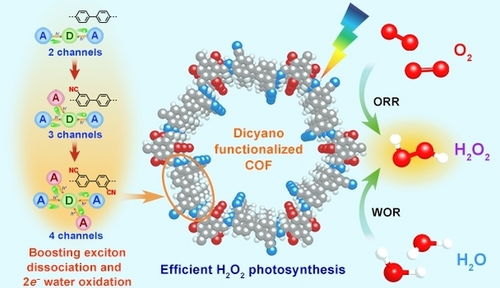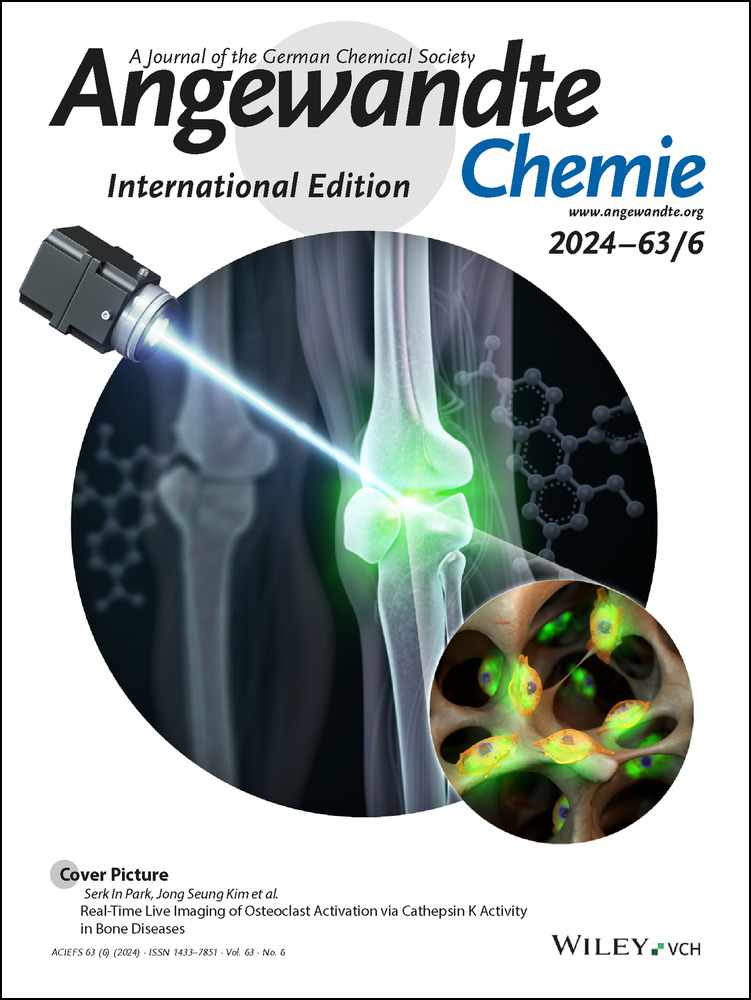Efficient Photosynthesis of Hydrogen Peroxide by Cyano-Containing Covalent Organic Frameworks from Water, Air and Sunlight
Graphical Abstract
This work not only provides new insights into the design of COFs by regulating the amount of charge transfer channels and enhancing the rate-determining two-electron water oxidation to boost H2O2 photosynthesis, but also paves the way for the practical application of COFs-based photocatalysts in solar-driven synthesis.
Abstract
The insufficient exciton (e−-h+ pair) separation/transfer and sluggish two-electron water oxidation are two main factors limiting the H2O2 photosynthetic efficiency of covalent organic frameworks (COFs) photocatalysts. Herein, we present an alternative strategy to simultaneously facilitate exciton separation/transfer and reduce the energy barrier of two-electron water oxidation in COFs via a dicyano functionalization. The in situ characterization and theoretical calculations reveal that the dicyano functionalization improves the amount of charge transfer channels between donor and acceptor units from two in COF-0CN without cyano functionalization to three in COF-1CN with mono-cyano functionalization and four in COF-2CN with dicyano functionalization, leading to the highest separation/transfer efficiency in COF-2CN. More importantly, the dicyano group activates the neighbouring C atom to produce the key *OH intermediate for effectively reducing the energy barrier of rate-determining two-electron water oxidation in H2O2 photosynthesis. The simultaneously enhanced exciton separation/transfer and two-electron water oxidation in COF-2CN result in high H2O2 yield (1601 μmol g−1 h−1) from water and oxygen without using sacrificial reagent under visible-light irradiation. COF-2CN can effectively yield H2O2 in water with wide pH range, in different real water samples, in scaled-up reactor under natural sunlight irradiation, and in continuous-flow reactor for consecutively producing H2O2 solution for water decontamination.
Conflict of interest
The authors declare no conflict of interest.
Open Research
Data Availability Statement
The data that support the findings of this study are available from the corresponding author upon reasonable request. Deposition numbers 2315992 (for COF-0CN), 2315993 (for COF-1CN), and 2315994 (for COF-2CN) contain the supplementary crystallographic data for this paper. These data are provided free of charge by the joint Cambridge Crystallographic Data Centre and Fachinformationszentrum Karlsruhe Access Structures service.





